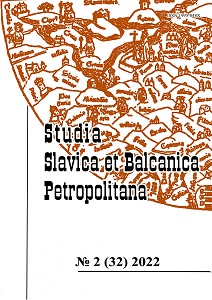Почитание образа Остробрамской иконы Божией матери в контексте литовской идентичности
The veneration of the Ostrobram icon of the Mother of God in the context of Lithuanian identity
Author(s): Natalia Valerievna TuryginaSubject(s): Christian Theology and Religion, Ethnohistory, Modern Age, Recent History (1900 till today), Sociology of Religion, Identity of Collectives
Published by: Издательство Исторического факультета СПбГУ
Keywords: ethnicity; identity; Grand Duchy of Lithuania; Polish-Lithuanian Commonwealth; Lithuanian; Polish; nation-building; constructivism; Ostra Brama; Vilnius; Vilna; cult of the Virgin Mary;
Summary/Abstract: The history of the creation and veneration of the image of Our Lady of Ostrobram is studied as a reflection of the processes of the forming Lithuanian national identity in its dynamics over several centuries. The author analyzes how the icon reflects the main ethnic markers, which include: territory, confessional affiliation, language, historical memory, ideas about the past and the future. Theories of the origin of the image and disputes about its confessional affiliation led to the idea of the formation of interconfessional dialogue and unity in diversity as a marker of the border and frontier zone. Within the framework of the Polish-Lithuanian Commonwealth, which united the Grand Duchy of Lithuania and the Kingdom of Poland, the Ostra Brama was perceived as «Strażniczką Kresów», or the guardian of the eastern borders. The preserved historical songs, psalms and hymns dedicated to the Virgin Mary in Vilna emphasize the regional identity. However, at the same time, powerful integration processes in the Polish-Lithuanian Commonwealth led to the assertion of Polishness, which was reflected in fiction, where until the 1920s and 1930s the Ostrobram image was perceived as an integral symbol not only of Polish culture, but also of Polish history and statehood. As the conducted research has shown, the intensified aspirations of the local population for the rooting, the use of the national language and the political processes of the Lithuanian national revival led to the transformation of ideas about the image, which in the 20th century gradually becomes a symbol of Lithuanian rather than Polish. Nevertheless, it is still uncertain whether the Ostrobram Mother of God has become the state symbol of Lithuania as a nation or it remains the guardian of the local original culture and traditions.
Journal: Петербургские славянские и балканские исследования
- Issue Year: 2023
- Issue No: 1 (33)
- Page Range: 68-80
- Page Count: 13
- Language: Russian

